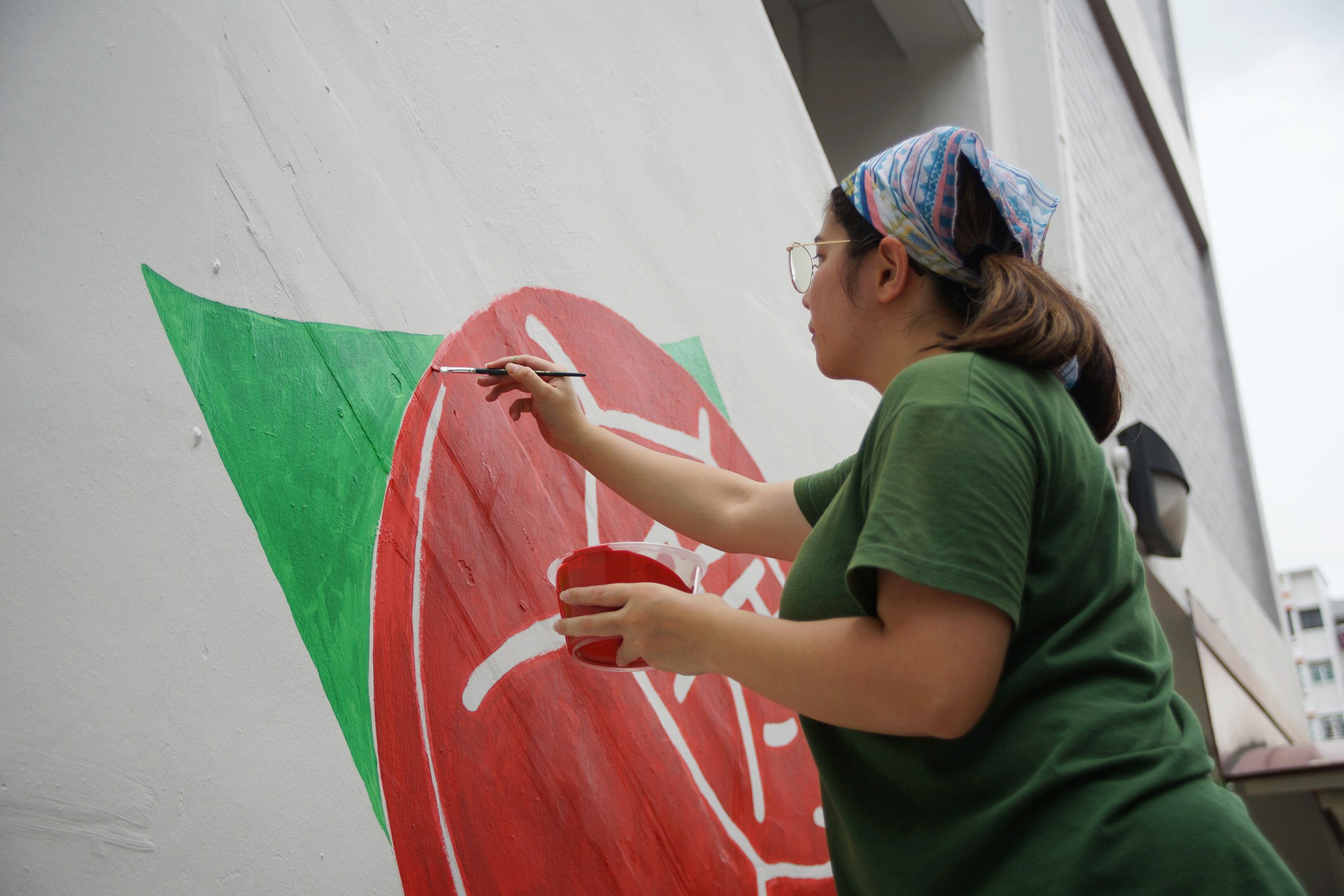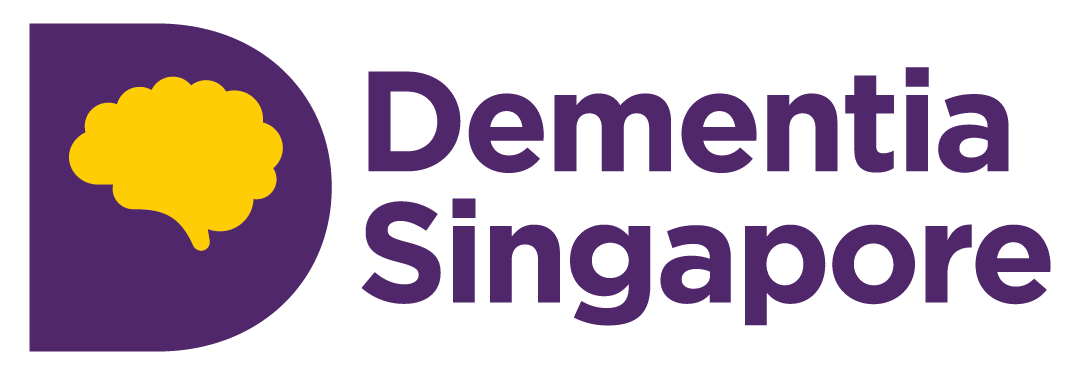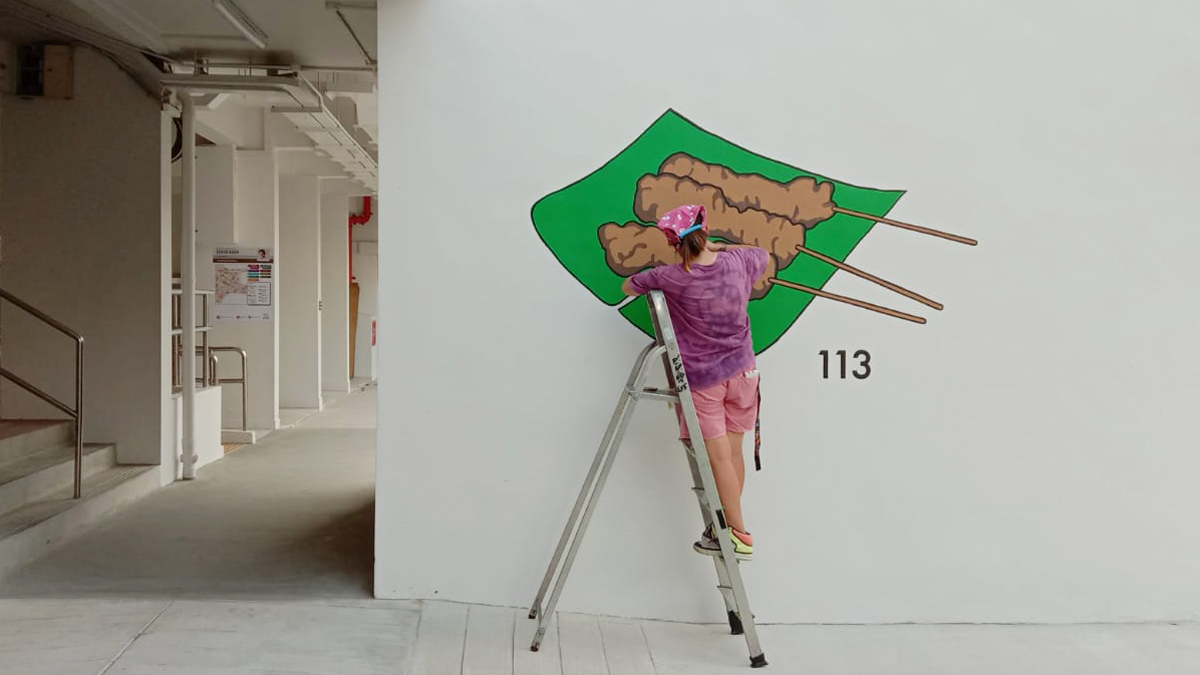As dementia becomes more prevalent in Singapore, ADA has been steadfast in its belief, supporting those impacted by the condition. With the launch of dementia-inclusive initiatives, ADA hopes to enable seniors and persons living with dementia to continue to age-in-place, live and thrive in their familiar areas.
Our work at Kebun Baru is one such initiative, where we have been actively walking the ground since 2018, increasing dementia awareness among its grassroots members and residents. In March 2019, the Wayfinding Project was initiated after a dialogue with Mr Henry Kwek, Member of Parliament for Kebun Baru Single Member Constituency. The focus group discussion was chaired by ADA and persons with dementia.
Across Singapore, there are 14 dementia-friendly communities, which are localised ground-up efforts aimed at building a caring and inclusive community supportive of those impacted by dementia. An initiative by the Ministry of Health and the Agency for Integrated Care (AIC), these efforts were launched in collaboration with community partners.
Other wayfinding projects led by AIC have also been initiated at Nee Soon and Yio Chu Kang, involving project owners and design experts. These included colour-zoning of residential areas, icons and murals so that these housing blocks and commonly accessed routes are more recognisable.
At Kebun Baru, the Wayfinding Project led by ADA involved the collaboration of the grassroots members to identify housing estates with high proportions of seniors and involved persons living with dementia. As of April 2021, ADA has completed 37 murals across 10 blocks along Ang Mo Kio Avenue 3 and 4.
While there are different initiatives to build dementia-friendly communities, one unique element of the Wayfinding Project at Kebun Baru is the participation of people with dementia in discussions and the execution. By doing so, not only does it cement our belief in practicing inclusiveness in everything we do, it empowers persons with dementia and go a long way in changing the perception of others towards persons with dementia, seeing them as able contributors.

A completed mural at Ang Mo Kio Avenue 3
We spoke to Ms Emily Ong and Mr Anjang Rosli, two of ADA’s volunteers who are living with young-onset dementia, and they shared their perspectives and experiences as being part of the project team that spearheaded the iconic murals in Kebun Baru.
1. Tell us how you got involved in the Wayfinding Project at Kebun Baru?
Emily: The opportunity to be part of this project came about after our dialogue with Mr Henry Kwek, MP of Kebun Baru Single Member Constituency. This dialogue was organised as part of our Voices for Hope programme where we, persons living with dementia and our care partners, are empowered on a self-advocacy journey.
Prior to this dialogue with Mr Henry Kwek, I was so excited that I asked my hubby to take me to a Kebun Baru town centre to do a ground sensing of the place and experience navigating through the town as a person living with dementia. During the dialogue session, we discussed different ways the community-at-large can better support people living with dementia who are staying in their local neighbourhood.
Anjang: I was invited by ADA to participate in the mural wayfinding project. I was happy and excited as I was lost in my own neighbourhood (in Woodlands) before because of how similar all HDB void decks are. The lift landings and lobbies all look so similar that we can lose our way quite easily.
2. What was the whole process like for you?
Emily: The whole process was empowering because I got to work with other individuals who were part of the project team. I was able to readily share my views, and my voice was valued and listened to by others in the project. I would say that our involvement – Anjang and myself – and the overall collaboration were a big asset to the project. The outcome was a fusion of perspectives from everyone involved – people with the lived experience of how the provision of murals will assist in wayfinding, care professionals from ADA, and the artists, as well as the Kebun Baru grassroots community leaders.
Ultimately, it is not just about having visual cues. But more importantly, how these visual cues can be “enablers” to support someone living with dementia to remember and identify his or her block and confidently navigate their way back home.
Anjang: The process was very empowering for me. It was really a team effort. Happy to also be able to work with other persons living with dementia. It felt good because I know that whatever is put in place will truly be helpful to people with dementia. We were involved in exploring where to place the murals, the exact walls to paint that will help persons with dementia recognise their blocks as they walked pass. It was fun, and a huge sense of achievement after completion.
3. Which mural is your favourite, and why?
Emily: The ‘ang ku kueh’ mural has a special meaning for me because it is the favourite kueh of my late grandma and me. This affective memory is crucial for persons living with dementia because it is the strongest form of memory for any individual. Hence, tapping on the affective memory is the cornerstone of the Wayfinding Project at Kebun Baru.

A volunteer painting a popular pastry, Ang Ku Kueh
Anjang: My favourite is the rabbit sweet. It really brings back fond memories. It reminds me of my younger days when I used to have to walk 3km back home from school every day. The rabbit sweet was my daily companion during those long walks.
4. We are aware of the Nee Soon HDB blocks that are colour-coded to help elderly with dementia move around, and we are also aware of this wayfinding project in Kebun Baru that are also intended to aid in wayfinding. What are your thoughts on the two different approaches?
Emily: Human navigation consists of two main processes: wayfinding (deciding where to go) and locomotion (moving through space and avoiding obstacles). Regardless of the types of visual cues provided, it needs to be able to help us orientate ourselves, thereafter plan the route by making the start and end points clear, help us to monitor our progress as we move towards our destination, and finally recognising the destination once we have reached it. At the end of the day, it is about how we perceive, experience, and use the visual cues in the built space, and think about what to do with it.
While both are wayfinding projects, the big difference between the two projects is that the murals in Kebun Baru were done in a way that considered how persons living with dementia take in visual cues (Information), and our subsequent response to it. This was possible because the project had two persons with the lived experience as co-planners and decision makers. Hence, our sensitivity to having a low threshold of environmental stimulation, potentially being distracted by irrelevant visual cues to problem-solve in a wayfinding task, and our weak ability to process information. These were all taken into consideration for the placement and design of the wayfinding murals in Kebun Baru.
The murals were painted only at key points that will support decision-making and a way to monitor that one is on the right track to home. The colour of each mural is kept to a maximum of three colours because stimulation involving more than one sense can easily overwhelmed our limited attentional functions. This also explains the rational for the comparatively smaller-sized numerals for the block numbers to avoid competing for attention with the murals. Unlike colours, carefully chosen murals that considers the cultural and age factor of a particular neighbourhood add a touch of meaningfulness and familiarity on top of being distinctive and legible.
Anjang: To me, when an entire pillar is painted in a particular colour, I will get slightly overwhelmed. There is also no associative memory for the designs in Nee Soon. When there is too much information, I will not be able to process all the details that are given, and it increases the confusion for me. I really like the ones in Kebun Baru, as the murals are catchy, and reflect culture and reminiscence. There is a lot more character for the murals in Kebun Baru. They make me smile and happy. For me, this is a lot more helpful for persons with dementia, as the murals also bring back fond memories when I see them.
5. As persons living with dementia, do share with us what else we can do to aid in wayfinding for persons living with dementia, especially in our neighbourhoods?
Emily: For me, I would advocate for dementia-sensitive levels of lighting in the neighbourhood and walkways. Good lighting is particularly important for persons living with dementia to minimise anxiety. Poor lighting reduces our ability to make sense of our surroundings and increases the difficulty in navigation. Hence, general lighting in the walkways and void decks, as well as localised lighting in the elevator areas can be further explored to aid in wayfinding.
Anjang: Because of my Lewy body dementia, my visual perception is affected. Do not use dark-coloured tiles and be mindful of the lighting used that it does not cast dark shadows. Dark shadows make me fearful because of the possible illusions that I may have when I see these dark shadows.
6. As self-advocates speaking up for people with dementia, do share with us how can the society be more inclusive for persons living with dementia.
Emily: We need a society that can accept and appreciate people with dementia as individuals who think, behave, and express ourselves differently from societal norms. Despite living with cognitive impairments, we have common needs like everyone – the need to feel accepted and valued as a fellow member of society.
Anjang: Everyone in the community should learn how to recognise and aid persons living with dementia. Do not argue and be patient with us.
There are days when I am overwhelmed by too many stimulations in the community – noise, sights, signs, traffic, crowd, and when this happens, I will get agitated and react unpleasantly. So, to me, dementia awareness is key for any community to become dementia-inclusive. Unfortunately, because of the invisible nature of our condition, you will probably only know that I am living with dementia when I react negatively. On other days when I am not triggered, I am constantly learning to cope and navigate on my own. So, do not take our reactions as something negative. Rather, be patient with us, and understand that our reactions are simply our way of telling you that we need help.
Useful Link: Key Findings from the 2023 Kebun Baru Wayfinding Study



